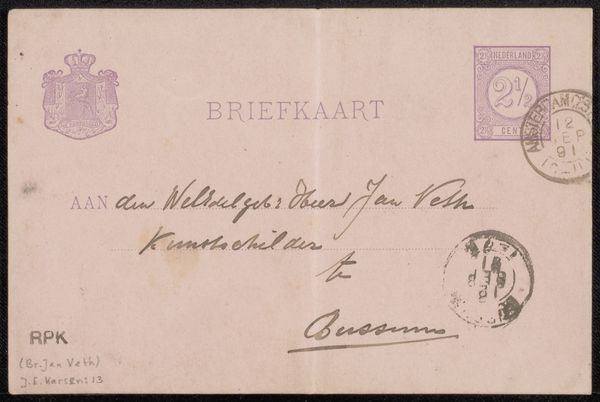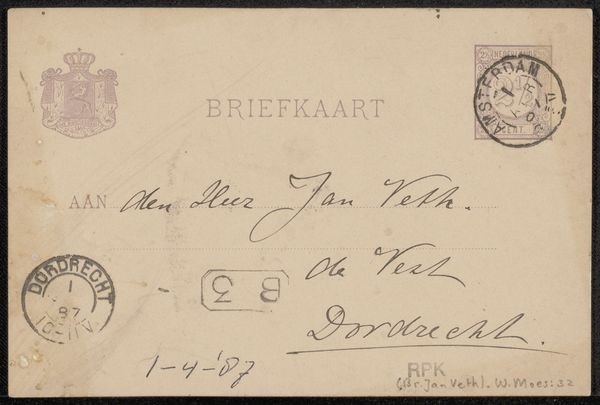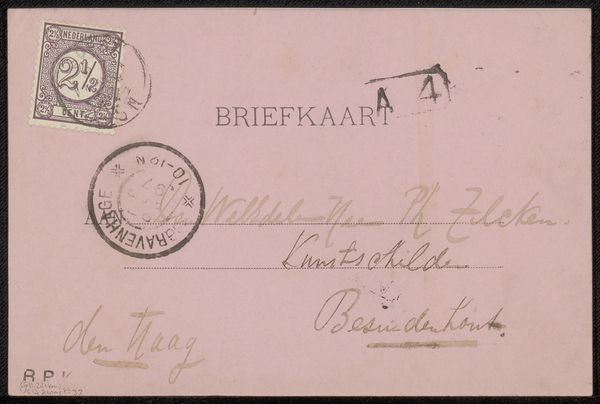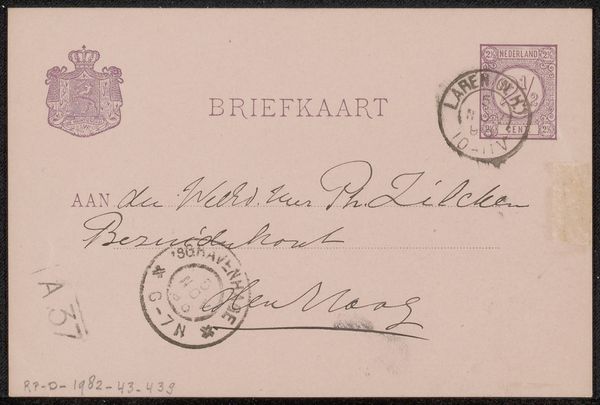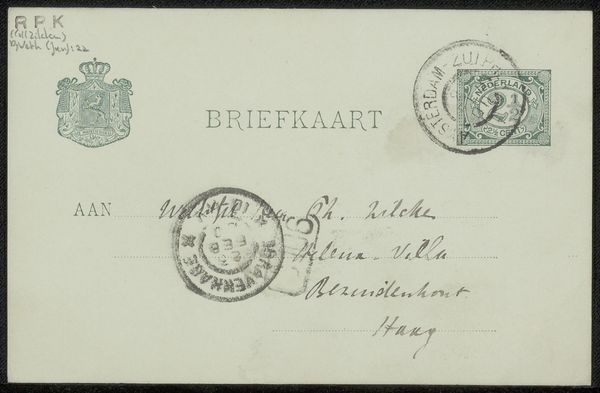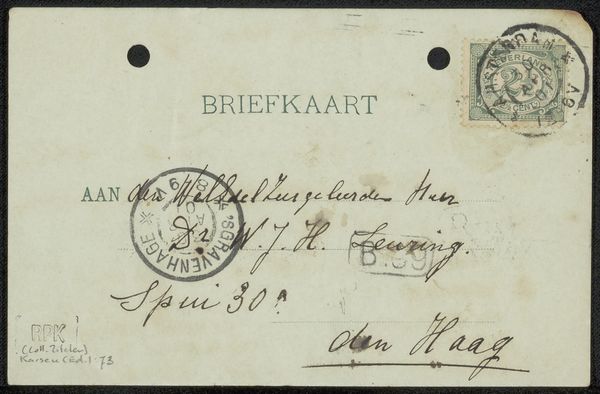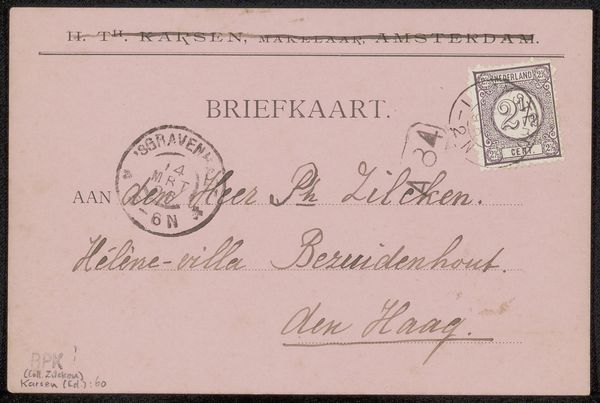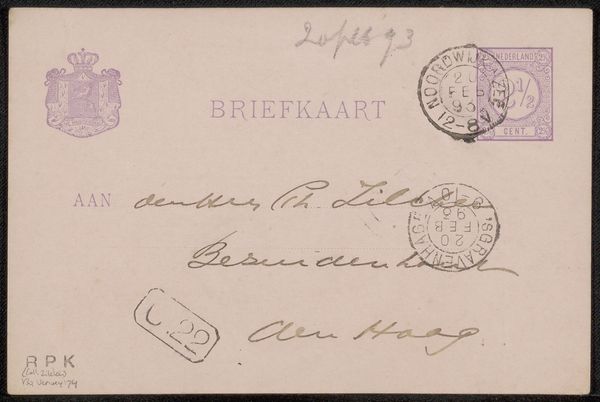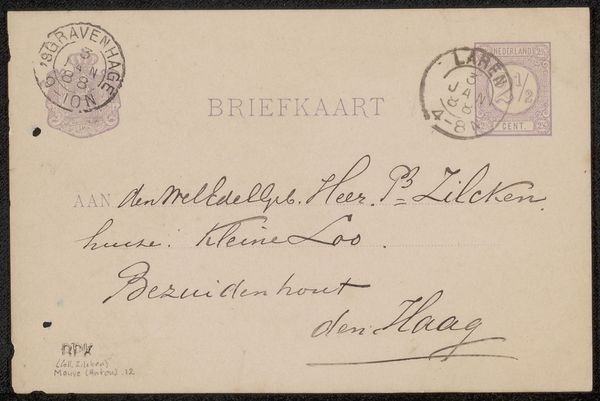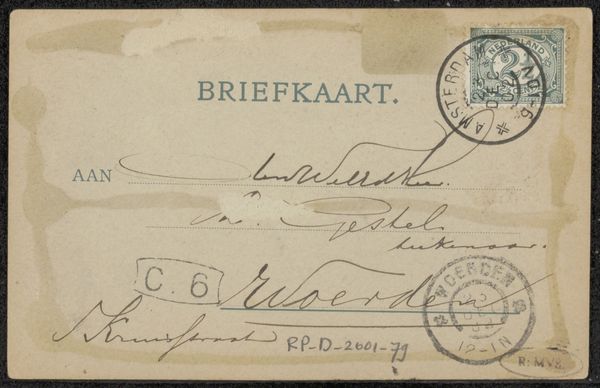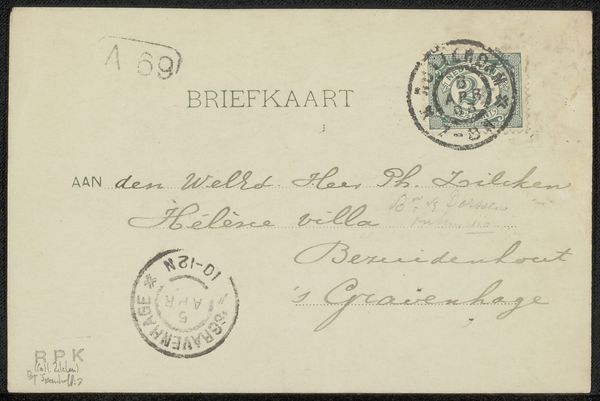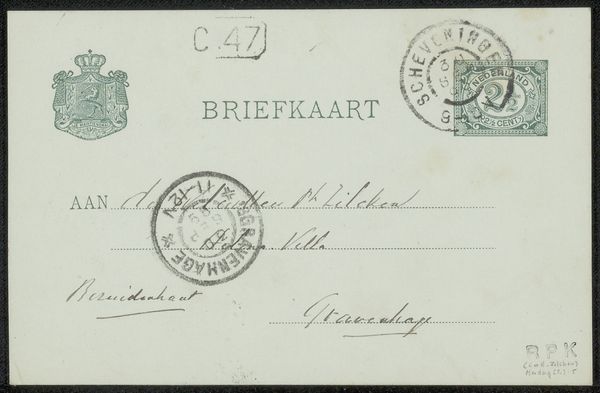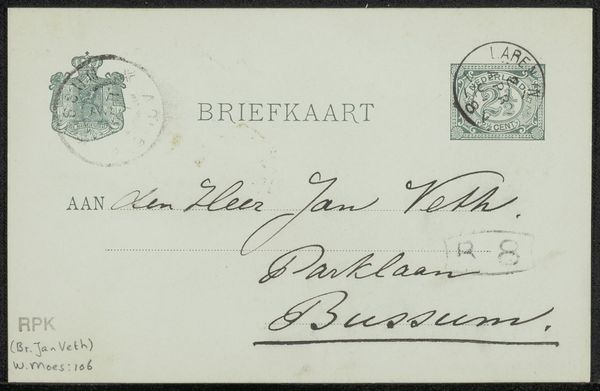
paper, ink
#
paper
#
ink
#
calligraphy
Copyright: Rijks Museum: Open Domain
Curator: What we're looking at is a briefkaart—a postcard—penned by Albert Verwey addressed to Jan Veth, likely dating from before 1894, given its postal markings. It’s crafted simply from paper and ink. Editor: The first impression is…fragile. Almost ghostly with the pale paper and faded ink. A fleeting message preserved across time, hinting at a vanished exchange. Curator: Absolutely. The materiality speaks volumes about everyday communication back then. Postcards facilitated quick, cheap correspondence, part of a broader shift in communication technologies. What’s interesting is seeing calligraphy used for such an informal medium. It almost elevates it. Editor: I see it also hinting at power structures. The ornate coat of arms juxtaposed with a handwritten address...the established elite contrasted with emerging modes of connecting. Who has access to write, to communicate? Whose voices were easily disseminated? It provokes a host of questions on how we create social networks. Curator: Indeed. And notice how the postal markings—the stamp and circular date—become integral parts of the artwork itself. They denote not only the date and postal rate, but show the systems needed to physically produce the means to distribute them. The labor involved in that process—paper production, printing, mail delivery—is invisible but intrinsic. Editor: Right. Also it points to authorship. Here's Verwey, addressing the postcard directly to Jan Veth’s brother—a level of casual access speaks volumes. In today's climate of formal, performative connectivity through social media, this glimpse into private exchange feels quietly radical. Curator: This piece really pushes against the notion that art needs to be grand in scale to be meaningful. It transforms the mundane – the act of sending a brief message – into something quite resonant. Editor: In its own quiet way it speaks volumes about cultural transmission. Even ephemera carries potent layers of identity and social context if we approach it with that frame of mind. Curator: Precisely. The story behind it really exemplifies how close examination of a single object expands into larger social networks. Editor: For me it confirms the importance of seeking a connection between the personal and broader societal influences through artworks, however small.
Comments
No comments
Be the first to comment and join the conversation on the ultimate creative platform.
